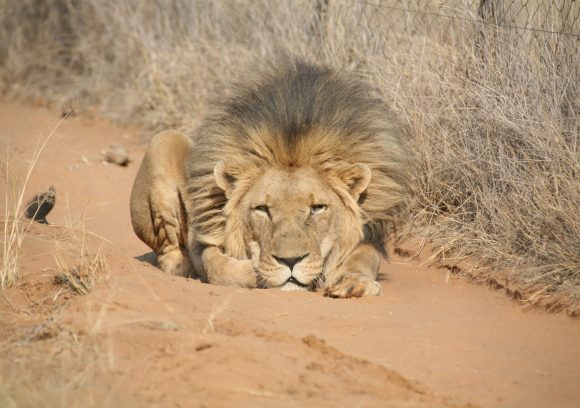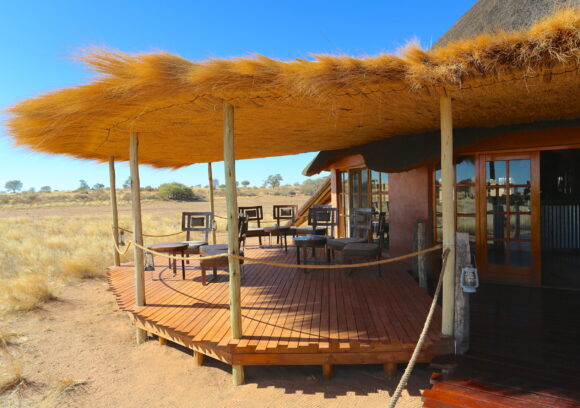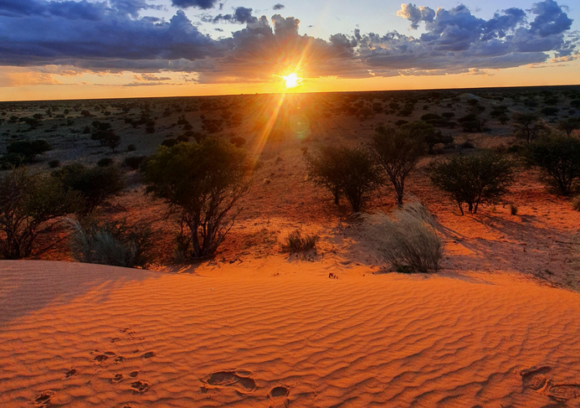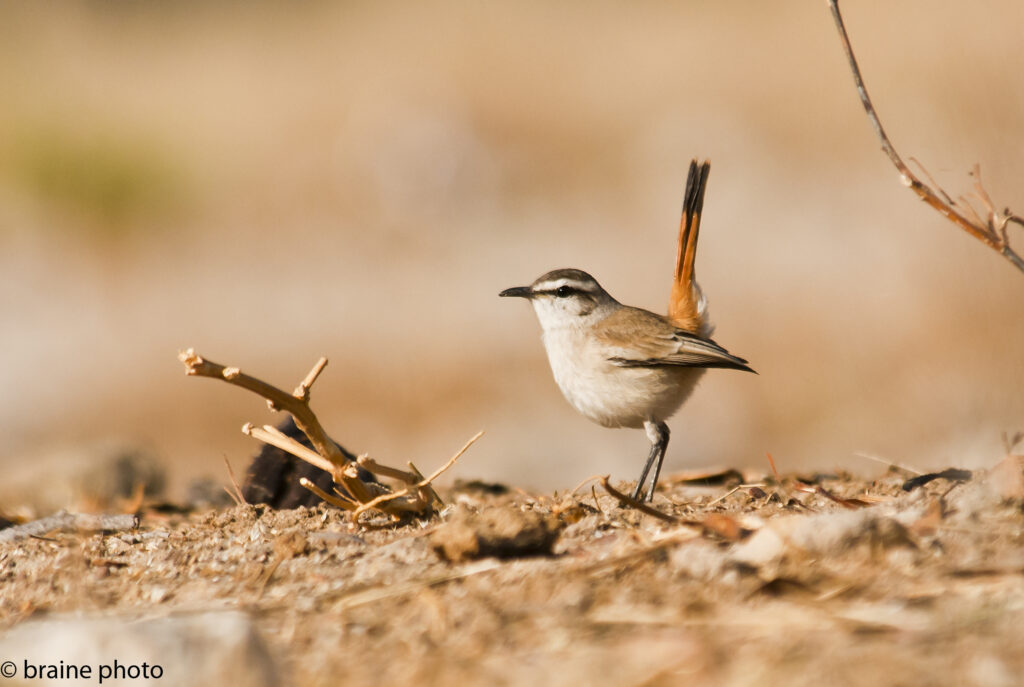Exploring Namibia's Eastern Region

East – Kalahari Desert
Kalahari conjures up visions of ancient red dunes, Lourens van der Post, the Bushmen (San) and black-maned lions. It is very different to the Nam ib, as it is not a desert in the strict sense of the word.
On average, it receives more rain than a true desert, well over 100 millimetres a year, in some areas as much as 250 millimetres. However, the sand sheet that covers the Kalahari has virtually no surface water.
Evidence suggests that the region once may have been much more arid than it is now. A better description of the Kalahari would therefore be that it is a ‘fossil desert’ rather than a true desert.

The word ‘Kalahari’, meaning ‘a waterless place’, is derived from the Tswana word Kgala, meaning the great thirst, or the tribal word Khalagari, Kgalagadi or Kalagare. Vast areas of the Kalahari are covered by red sand, accumulated in longitudinal or linear dunes that trend parallel to the prevailing wind.
They are generally straight and very long, with sharp crests. Formed many centuries ago, they have become fixed by vegetation of the acacia type and grass cover, with broad dune ‘streets’ in between. An outstanding feature of the Kalahari dunes is their extraordinary red colour, which is due to a thin film of red iron oxide that coats each grain of sand.

Summer temperatures in the Kalahari range from 20-45°C. When it rains the water drains away into the dry dune valleys. Still, the region has several seasonally inundated pans, such as the Etosha Pan in northern Namibia and the large salt pans of the Makgadikgadi Pan in Botswana.
Animals that live in the Kalahari include lion, brown hyaena, meer-kat, giraffe, warthog, jackal, eland, gemsbok, springbok, hartebeest, steenbok, kudu and duiker, and many species of bird and reptiles.
Vegetation in the Kalahari consists mainly of grasses and acacias, but there are over 400 identified plant species present, including the wild watermelon or tsamma melon. The Sari people or Bushmen have lived in the Kalahari for some 20,000 years as hunter-gatherers, surviving by hunting game with bows and arrows and gathering edible plants such as berries, melons nuts and also insects.

Bushmen rarely drink water, getting most of their water requirements from plant roots and desert melons found on or under the desert floor, and storing water in blown-out ostrich eggshells. They have their characteristic language that includes clicking sounds.
There are several excellent guest farms and lodges in the Kalahari, including the well-known flying centre at Bit-terrasse, a major attraction for gliding, also referred to as ‘soaring’. Most of these establishments include visits to the Bushmen, who tell tourists about their lifestyles, including how they track and hunt, which plants they incorporate into their diet and the many medicinal uses of plants.

